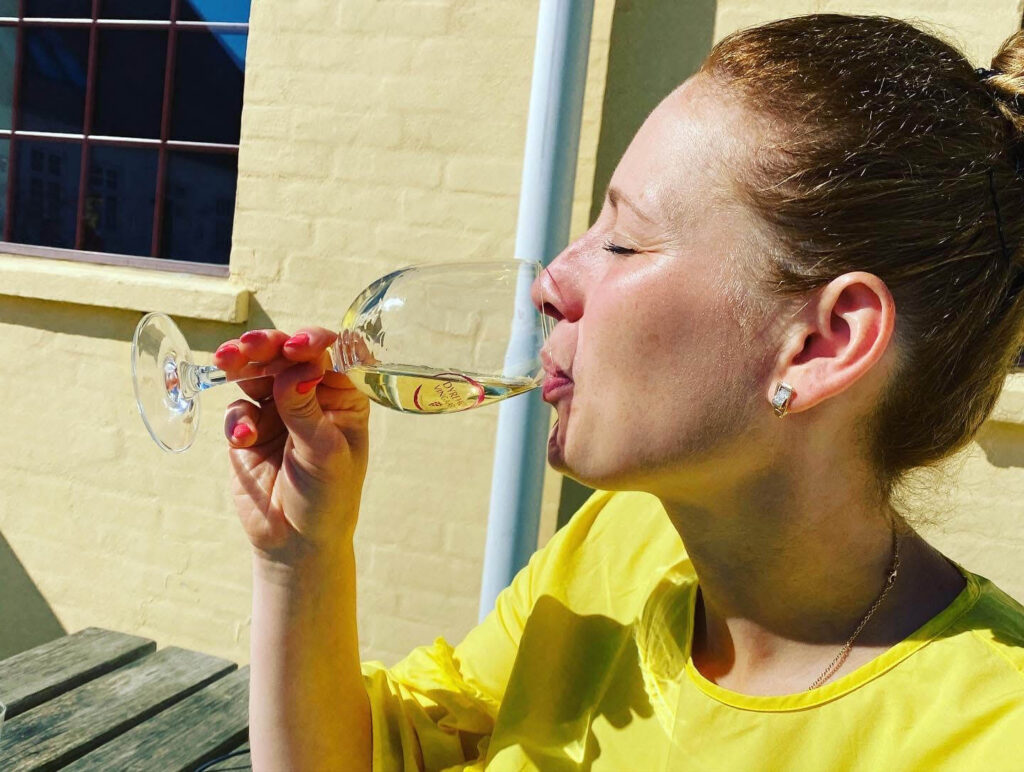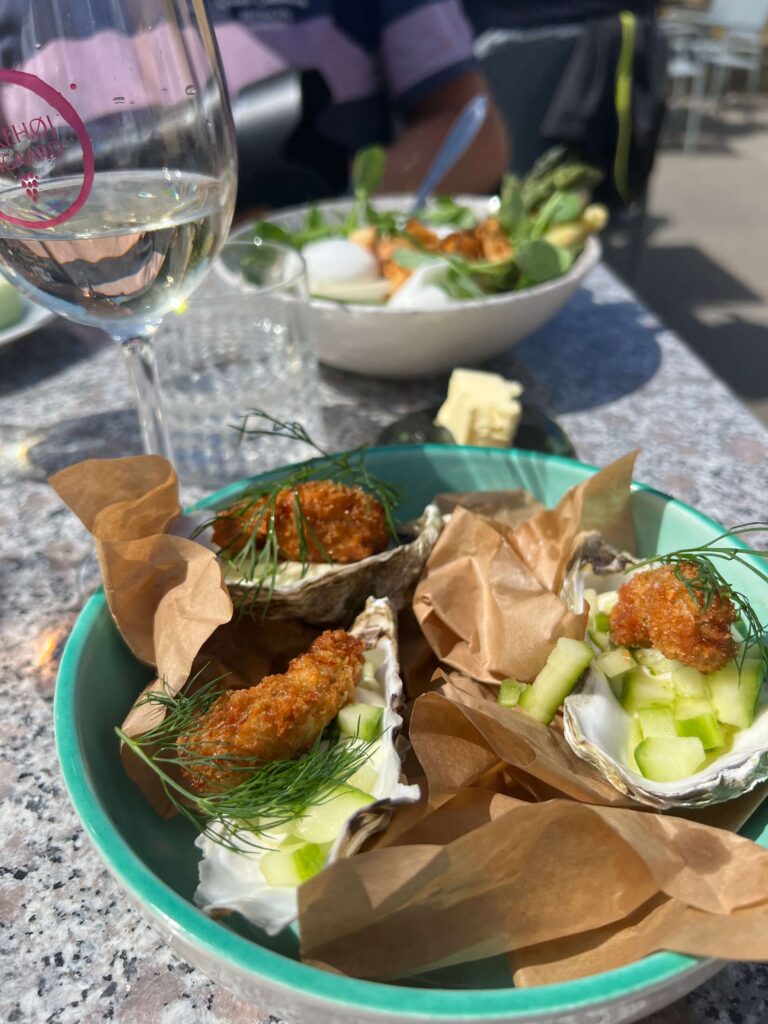When you taste a wine from Dyrehøj, you get a good sense of what Denmark’s terroir has to offer. Their wines are fruity and fresh, which is a direct reflection of the cool climate and unique soil conditions present in Denmark. It has also led to recognition in international competitions.
But it’s not just the wine that makes this place special. It’s the location, the people, the history and the innovative spirit that goes into overcoming the challenges of the climate to produce something as sublime as their wines.
We, Yulia and Christopher from DanishWine, have visited several times. As you walk around the winery, you can feel the commitment to sustainability and local production. They grow their grapes organically and try to keep things as natural as possible.

There’s a reason why 25% of Danish wine production Danish wine takes place on Røsnæs. The area is known for its unique soil conditions and climate, making it ideal for viticulture. The subsoil is predominantly sandy and contains limestone, which has an excellent ability to retain water. This provides optimal drainage and nutrient balance for the vines. Climatically, the area enjoys 100 hours more sunshine than the rest of Denmark, which is crucial for the ripening of the grapes. This combination of sun, soil and climate creates a terroir that is particularly favorable for growing grape varieties such as Solaris, Cabernet Cantor and Souvignier Gris. Today, there are several wineries out here, and it’s worth a visit to Barfod Vin, Røsnæs Vingård and STUB vingaard. End the day with an ice cream and a dip in Røsnæs harbor.

With 35,000 vines, it is by far Denmark’s largest vineyard. The grapes are primarily Solaris but also other green grapes as well as red (Cabernet Cantor), blue and gray grapes (Souvignier gris). They produce around 50,000 bottles a year and have their own distillation process on the farm.
It’s run by a passionate team led by siblings Betina and Tom, who have put their heart and soul into creating exceptional Danish wine in our cool climate.
There is a restaurant, wine tastings and a shop. The restaurant is a culinary delight with dishes like cold pea soup and fried oysters washed down with one of their wine menus. We also recommend taking a walk in the fields overlooking Samsø, or how about visiting their shop where you can try various wine tastings and local specialties other than wine.

From fresh, crisp white wines to delicate rosés, Dyrehøj Vineyard has created an impressive palette of wines that invite discovery. The winery produces the following wines:
There are several different options available. You can take a guided tour of the winery and visit the wine bar for tastings. Both private and corporate events are organized.
Dyrehøj Vineyard supplies wine to Dragsholm Castle, Tivoli Hotel & Congress Center, Hotel Nyborg Strand and Støvlet Katrines Hus in Sorø. These partners represent a wide range of the Danish gastronomic scene, from luxury hotels to local restaurants. Collaborating with these establishments not only expands Dyrehøj Vingaard’s market reach, but it also contributes to strengthening the winery’s brand and reputation. It’s a win-win situation where both Dyrehøj Vingaard and their partners can offer a unique and authentic Danish wine experience to their guests.
In addition to the range of wines, Dyrehøj Vingaard has also expanded their product range to include other alcoholic beverages. They have invested in a distillery, which has enabled the production of gin, fortified wine and other types of spirits. This is a smart way to utilize the residual products from wine production. The distillery allows them to create a more circular economy and offer a wider range of products to consumers. It also shows the winery’s innovative approach and willingness to experiment, making them a versatile producer that can satisfy a wide range of taste preferences.
Dyrehøj Vineyard is a gem in the Danish landscape, a place where passion for wine, sustainability and community go hand in hand. With its exquisite wines and irresistible charm, Dyrehøj Vingaard is definitely worth a visit for any wine lover. Read about the other Zealand wineries here.

Danishwine.com is set up in the world to spread knowledge of Danish wine both in Denmark and abroad.
© 2024 DanishWine